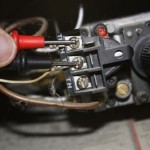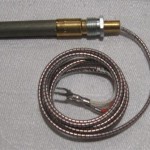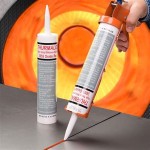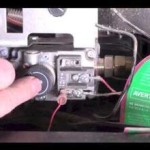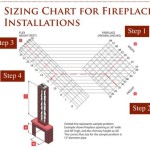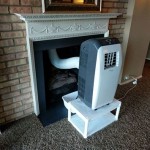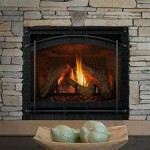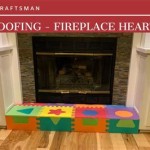Copper Fireplace Surround: A Timeless Accent for Your Home
A copper fireplace surround is more than just a decorative element; it's a statement piece that can significantly enhance the aesthetic appeal and perceived value of a home. Copper, a naturally occurring metal known for its warm tones, durability, and malleability, has been used in architecture and design for centuries. Its application as a fireplace surround brings a touch of elegance, sophistication, and timelessness to any living space. This article will delve into the various aspects of copper fireplace surrounds, encompassing their benefits, design considerations, installation nuances, and maintenance requirements.
The appeal of copper lies in its inherent beauty and its unique aging process. When exposed to the elements, copper develops a patina, a greenish or brownish film that forms on the surface. This patina provides a layer of protection against corrosion and gives the copper a distinctive, antique appearance. While some homeowners prefer the bright, shiny look of polished copper, others appreciate the character and depth that a patina adds. Regardless of preference, a copper fireplace surround can be customized to suit a variety of architectural styles, from traditional to contemporary.
Aesthetic Benefits of Copper Fireplace Surrounds
The aesthetic benefits of a copper fireplace surround are numerous and contribute to its widespread popularity. Firstly, the warm, rich tones of copper create a cozy and inviting atmosphere. Unlike cooler metals like stainless steel or chrome, copper radiates a sense of warmth and comfort, making it an ideal choice for a focal point in a living room or family room. The natural variations in color and texture inherent in copper add visual interest and prevent the surround from looking monotonous.
Secondly, copper is a versatile material that can be easily manipulated to create a variety of designs. Whether it’s a simple, streamlined surround or an elaborate, embossed design, copper can be shaped to complement the existing décor. The metal can be hammered, etched, or patinated to achieve different visual effects, allowing for a high degree of customization. This adaptability makes copper a suitable choice for both modern and traditional homes.
Thirdly, the reflective qualities of copper enhance the ambiance of the room. Copper surfaces reflect light, creating a subtle shimmer that adds depth and dimension to the space. This reflective quality is particularly beneficial in rooms with limited natural light, as it can brighten the area and make it feel more spacious. The interplay of light and shadow on the copper surface also adds visual interest and creates a dynamic focal point.
Finally, the timeless appeal of copper ensures that a copper fireplace surround will not go out of style. Unlike fleeting trends in interior design, copper has been a favored material for centuries and continues to be a popular choice among homeowners and designers. Its enduring beauty and versatility make it a worthwhile investment that will enhance the value and aesthetic appeal of the home for years to come.
Design Considerations for Copper Fireplace Surrounds
When designing a copper fireplace surround, several factors must be considered to ensure that it complements the existing architecture and décor. The first consideration is the size and scale of the fireplace and the surrounding room. A surround that is too large can overwhelm the space, while one that is too small may appear insignificant. It's important to choose a size that is proportionate to the fireplace opening and the overall dimensions of the room.
The second consideration is the style of the surround. Copper can be used to create a wide range of styles, from simple and modern to ornate and traditional. A minimalist design with clean lines may be appropriate for a contemporary home, while a more elaborate design with intricate details may be better suited for a traditional home. The style of the surround should complement the existing architectural features of the home, such as the trim, molding, and other decorative elements.
The third consideration is the finish of the copper. As mentioned earlier, copper can be polished to a bright, shiny finish or allowed to develop a patina. The decision of whether to polish or patinate the copper depends on personal preference and the desired aesthetic. Polished copper offers a clean, modern look, while patinated copper provides a more rustic, antique appearance. The finish of the copper should be consistent with the overall design scheme of the room.
Another design element to consider is the integration of other materials. Copper can be combined with other materials, such as stone, wood, or tile, to create a unique and visually appealing surround. For example, a copper surround might be paired with a granite hearth or a slate tile facing. The combination of different materials can add depth and texture to the fireplace and create a more dynamic focal point. When combining materials, it’s crucial to ensure that the colors, textures, and styles are complementary and create a cohesive design.
Finally, consider the functionality of the fireplace. While a fireplace surround is primarily a decorative element, it can also serve a functional purpose by providing a safe and durable frame for the fireplace opening. The surround should be designed to withstand the heat and wear and tear of regular use. It should also be easy to clean and maintain to ensure that it retains its beauty for years to come.
Installation and Maintenance of Copper Fireplace Surrounds
The installation of a copper fireplace surround is a process that requires precision and attention to detail. While some homeowners may attempt a DIY installation, it is generally recommended to hire a professional to ensure that the surround is installed correctly and safely. A professional installer will have the necessary tools and expertise to properly measure, cut, and secure the copper to the fireplace opening.
Before beginning the installation, it is essential to prepare the fireplace opening. This may involve removing any existing surround or facing and cleaning the surface to ensure that it is smooth and level. The installer will then measure the fireplace opening and cut the copper to the appropriate size and shape. The copper is typically attached to the fireplace using screws, nails, or adhesive, depending on the type of material and the design of the surround.
Once the copper is installed, it may be necessary to seal the seams and edges to prevent moisture and air from entering. This can be done using a sealant designed for use with copper. The sealant should be applied carefully to create a watertight barrier that will protect the surround from damage. After the sealant has dried, the surround can be cleaned and polished to remove any fingerprints or smudges.
Maintaining a copper fireplace surround involves regular cleaning and polishing to keep it looking its best. The frequency of cleaning and polishing will depend on the environment and the amount of use the fireplace receives. In general, it is recommended to clean the surround at least once a month to remove dust and dirt. This can be done using a soft cloth and a mild detergent.
To polish the copper, a specialized copper polish should be used. The polish should be applied to the surface of the copper using a clean cloth and then buffed to a shine. It is important to follow the manufacturer's instructions when using copper polish to avoid damaging the surface of the metal. If the copper has developed a patina, some homeowners may choose to remove it using a copper cleaner. However, others may prefer to leave the patina intact, as it adds to the character and charm of the surround.
In addition to regular cleaning and polishing, it is important to protect the copper from scratches and dents. Avoid using abrasive cleaners or scrub brushes that could damage the surface of the metal. Also, be careful when handling tools or other objects near the surround to prevent accidental scratches. With proper care and maintenance, a copper fireplace surround can retain its beauty and value for many years.
The choice between a pre-fabricated versus a custom-made copper fireplace surround depends largely on budget, time constraints, and desired level of personalization. Pre-fabricated surrounds are generally more cost-effective and readily available. They come in standard sizes and designs, offering a quick solution for those seeking a straightforward upgrade. However, they may not perfectly fit the dimensions of a unique fireplace opening or align with a specific design vision.
Custom-made copper surrounds, on the other hand, offer unparalleled design flexibility. Homeowners can collaborate with artisans to create a one-of-a-kind piece that perfectly complements their home's architecture and personal style. This option allows for intricate detailing, unique shapes, and a precise fit. However, custom work comes at a higher price point and requires a longer lead time for design and fabrication.
Whether opting for a pre-fabricated or custom-made surround, it's crucial to select a reputable supplier or artisan with experience working with copper. The quality of the materials and workmanship will directly impact the longevity and aesthetic appeal of the fireplace surround. Consider factors such as the gauge of the copper, the type of finish, and the method of construction when making a decision.

Copper Patina Fireplace Surround Brandner Design

Pin By Copper Design On Fireplace Surrounds Remodel Tile Surround

Retro Style Copper Fireplaces

Cbd S Custom Copper Sheet Metal Fireplace Mantle Work Page

Copper Fireplace Surrounds Arts Crafts Room Portland By Milo S Art Metal Llc Houzz Ie

Fireplaces Aluminum Stainless And Copper

Retro Style Copper Fireplaces

Copper Fireplace Mantel And Surround

Bask In The Glow Of A Copper Fireplace

Hand Made Maple Fireplace Surround With Copper Accent By Custom Woodgrains Custommade Com
Related Posts

